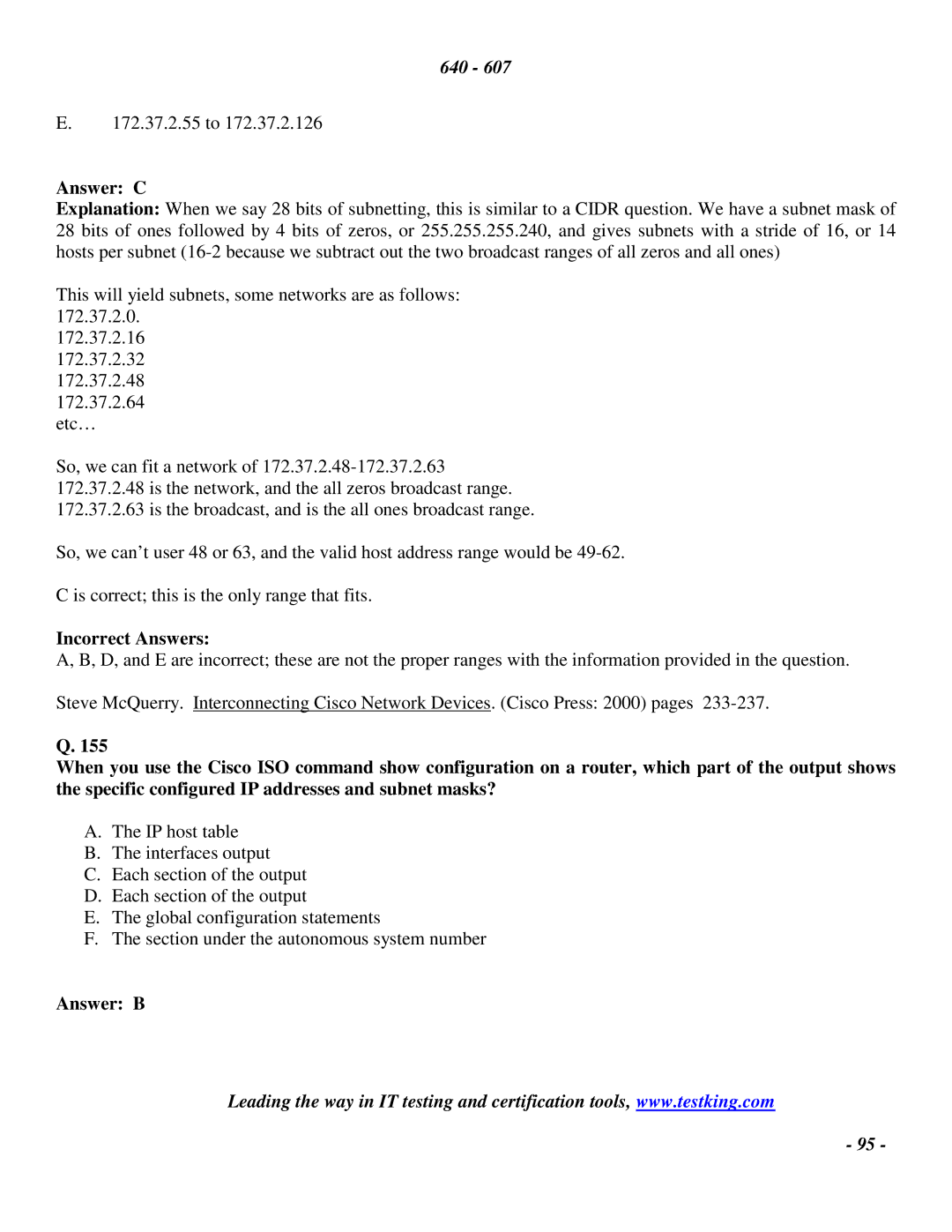640 - 607
E.172.37.2.55 to 172.37.2.126
Answer: C
Explanation: When we say 28 bits of subnetting, this is similar to a CIDR question. We have a subnet mask of 28 bits of ones followed by 4 bits of zeros, or 255.255.255.240, and gives subnets with a stride of 16, or 14 hosts per subnet
This will yield subnets, some networks are as follows: 172.37.2.0.
172.37.2.16
172.37.2.32
172.37.2.48
172.37.2.64
etc…
So, we can fit a network of
172.37.2.48is the network, and the all zeros broadcast range.
172.37.2.63is the broadcast, and is the all ones broadcast range.
So, we can’t user 48 or 63, and the valid host address range would be
C is correct; this is the only range that fits.
Incorrect Answers:
A, B, D, and E are incorrect; these are not the proper ranges with the information provided in the question.
Steve McQuerry. Interconnecting Cisco Network Devices. (Cisco Press: 2000) pages
Q. 155
When you use the Cisco ISO command show configuration on a router, which part of the output shows the specific configured IP addresses and subnet masks?
A.The IP host table
B.The interfaces output
C.Each section of the output
D.Each section of the output
E.The global configuration statements
F.The section under the autonomous system number
Answer: B
Leading the way in IT testing and certification tools, www.testking.com
- 95 -
